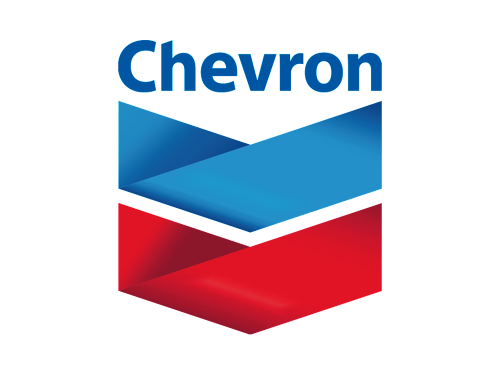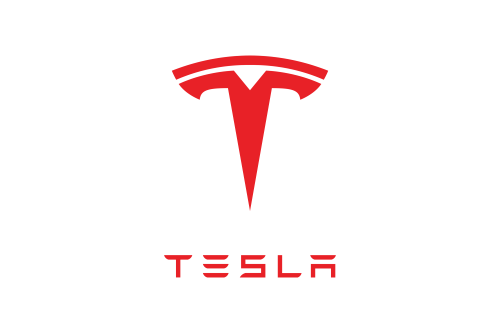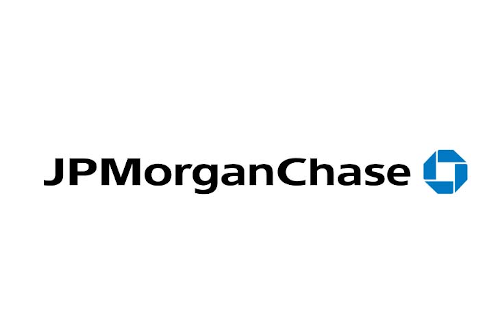Is PUE Still the Most Important Metric for Data Center Efficiency?
Power Usage Effectiveness (PUE) is a metric for measuring the overall energy efficiency of a data center facility. It is calculated by dividing the total amount of energy consumed by the facility by the energy used specifically by the IT equipment.
This metric is useful to data center managers because optimizing for it can lead to better energy efficiency, lower operational costs, reduced environmental impact, and support regulatory compliance and certification requirements.
But is it the most important metric for measuring data center efficiency?
The Rise of PUE as a Key Metric
PUE was developed by The Green Grid in 2007 and has been popular ever since due to the growing concerns of data center sustainability and for being able to represent overall efficiency with a single easy-to-understand number.
Since its introduction, PUE has been globally accepted and widely reported with its methodology standardized under ISO/IEC 30134-2.2016 and EN 50600-4-2.2016. PUE gained mass popularity because it is simple, good for benchmarking, and easy to trend.
A PUE of 1.0 represents a perfectly efficient data center, where all incoming power is used by IT equipment, with none wasted on cooling, lighting, or transmission losses. According to the Uptime Institute, the average data center PUE is 1.58, and if your facility exceeds this, you should consider efforts to reduce it.
Continuously monitoring PUE helps data center managers identify efficiency changes over time, such as during peak loads or seasonal shifts, allowing them to set goals, compare sites, and make the most informed energy decisions.
Limitations of PUE
Data center professionals emphasize PUE as it’s an important metric for assessing data center energy efficiency, but it has some limitations.
- Inverse relationship with IT load reduction. A data center’s PUE can worsen when IT load decreased because total energy consumption may not drop proportionately, making the facility seem less efficient despite better IT operations.
- Disregard for local climates. PUE doesn’t consider the impact of the local climate, making it easier for data centers in cooler regions to achieve lower PUEs compared to those in warmer climates, which skews comparisons.
- Narrow focus. PUE only measures the specific ratio of total energy consumer to energy used by IT equipment. It does not consider other factors like the efficiency of the IT equipment itself, the utilization of server capacity, or the overall productivity of the data center. Focusing solely on PUE can lead to unsustainable usage of other resources like water. To lower PUE, companies might use water economizers or evaporative cooling, potentially increasing water consumption. In regions with water scarcity, this can be more harmful than traditional cooling methods.
Additional Metrics for Measuring Data Center Efficiency
While PUE is important, there are many other data center sustainability and efficiency KPIs that you should tracked and analyze for a more comprehensive approach to optimizing your data center.
Here are some metrics that you should consider when trying to drive greener operations:
Efficiency Metrics
- Carbon Usage Effectiveness (PUE). Evaluates a data center’s carbon footprint by comparing carbon emissions to energy consumed by IT equipment.
- Water Usage Effectiveness (WUE). Tracks the efficiency of a data center’s water usage by comparing water consumption to energy consumed by IT equipment.
- Cabinets compliant with ASHRAE guidelines. Measures how much progress is being made towards optimal environmental conditions that minimize energy waste from overcooling.
Resource Utilization
- Virtualization ratio. Tracks how many VMs are in the environment for every one host to determine the extent to which virtualization technologies are implemented.
- Facility utilization. Measures how much data center space capacity is used.
- Stranded power. Quantifies the amount of unused power capacity at the site or rack level, highlighting opportunities to utilize existing resources.
- Server utilization. Tracks CPU, memory, and disk utilization rates to provide insights into the efficiency of computing resources.
Renewable Energy Usage
- Renewable energy percentage. Indicates the proportion of energy consumed by the data center that comes from renewable resources.
- Renewable energy capacity. Measures the installed capacity of renewable energy systems.
- Carbon emission savings. Quantifies the reduction in carbon emissions achieved through the use of renewable energy sources.
By measuring and analyzing theses key metrics together, you will be able to see a more holistic view of your data center’s behavior and how you can improve upon it to optimize energy efficiency.
The Role of Advanced Technologies in Efficiency Measurement
The top data center professionals leverage Data Center Infrastructure Management (DCIM) software to streamline management and greatly enhance energy efficiency, uptime, and productivity. A DCIM solution can automate data collection and PUE calculations, providing powerful tools and insights to boost efficiency and reduce PUE.
How DCIM Software Aids in Tracking and Optimizing Efficiency Metrics
Here are the ways that DCIM aids in tracking and optimizing efficiency metrics:
- Cooling optimization. Temperature monitoring and cooling charts help adjust set points to reduce cooling loads and improve efficiency.
- Capacity planning. Pre-configured dashboards provide real-time capacity insights enabling better forecasting and minimizing energy waste.
- Automatic PUE calculations. DCIM software automatically calculates PUE values by summing power readings. Users can easily configure which power sources count towards total, IT, or non-IT power for each site. Pre-configured charts display site PUE and trends over selected time periods.
- Collaborative data sharing. PUE charts can be shared via dashboards, automated email reports, or securely posted on corporate portals.
- Real-time monitoring. Continuous monitoring of power usage and environmental conditions helps quickly identify inefficiencies and optimize energy use.
- Energy billback reports. Customer-specific energy reports promote accountability, highlight inefficiencies, and encourage more efficient behavior.
Other Innovative Techniques
In addition to traditional cooling methods, data center managers are exploring innovative cooling techniques that positively impact efficiency.
- Energy-efficient hardware. State-of-the-art hardware solutions such as energy-efficient IT equipment, outlet-metered intelligent rack PDUs with environmental sensors, and modern lighting systems to reduce energy consumption. More modern IT equipment not only consumes less energy, but typically provides more computational power per kW and generates less heat which may reduce the necessary cooling load.
- Enhanced airflow management. Implementing hot/cold aisle containment, sealing cable cutouts, and arranging equipment for optimal airflow patterns can improve cooling efficiency, while monitoring and adjusting temperature and humidity can help maintain optimal operating conditions without overcooling or overhumidifying.
- Liquid cooling. Advanced cooling solutions such as liquid cooling technologies, including direct-to-chip and immersion cooling, can achieve higher energy efficiency and reduce reliance on traditional air-based cooling systems. Free cooling techniques, such as air-side and water-side economizers, leverage ambient environmental conditions for cooling without the need for mechanical refrigeration.
- Virtualize and consolidate. Server virtualization and consolidation strategies can maximize resource utilization and minimize the physical footprint of IT infrastructure. Consolidating underutilized servers and decommissioning outdated or inefficient hardware reduces the number of physical servers and associated hardware, which may lead to lower requirements for cooling, power distribution, and other support systems.
Renewable Energy Integration
Renewable energy sources can also play a crucial role in enhancing the overall efficiency and sustainability of data centers, complementing PUE and addressing its limitations. Here’s how renewable energy integration contributes to energy efficiency:
- Reduction in carbon footprint. While PUE focuses on energy efficiency, it doesn’t account for the source of that energy. Using renewable energy such as solar, wind, or hydroelectric power, significantly reduce the carbon emissions associated with data center operations, addressing a critical aspect of sustainability that PUE overlooks.
- Enhanced energy efficiency. Integrating renewable energy sources like on-site solar panels or wind turbines can lower the overall energy demand from the grid. PUE measures how efficiently energy is used, but renewables improve the efficiency of energy sourcing itself, making the energy lifecycle more efficient.
- Energy resilience and independence. By generating energy on-site through renewables, data centers can reduce their reliance on the external grid, enhancing energy resilience. This independence can be beneficial in regions with unstable power grids, improving uptime and operational utilization.
- Improvement in perception and compliance. Switching to renewable energy may help data centers meet regulatory requirements and achieve certifications like LEED or Energy Star. It also improves the public perception of the organization, aligning with corporate sustainability goals.
Industry Trends and Potential Future Directions
PUE will likely remain a top priority for data centers and managers can expect to see these trends based on the ongoing evolution of technology, sustainability goals, and industry best practices:
- Lower PUE targets. More and more sustainability-minded organizations are in pursuit of a PUE of 1.2 or lower as it becomes more attainable for state-of-the-art facilities. This requires maximizing energy efficiency across all systems, including IT hardware, cooling, and power distribution. This will push the boundaries of current technologies and drive investment in new solutions that will minimize energy waste.
- Integration with renewable energy. The growing shift towards renewable energy will continue with data centers aiming to power operations solely through green energy. While PUE measures energy efficiency, the use of renewables will reduce the overall environmental impact, leading to a more sustainable facility. This trend could lead to new metrics or variations of PUE that specifically account for the source of energy, such as Green PUE or Renewable Energy PUE.
- AI and machine learning optimization. AI and machine learning may begin to play a larger role in optimizing PUE in real-time, analyzing large amounts of data points to predict energy needs, adjusting cooling systems, and optimizing workloads. AI-driven optimization could enable data centers to achieve consistently low PUEs, even as workloads fluctuate, and environmental conditions change.
- Regulatory and industry pressure. Governments, like we have already seen in Europe with the Green Deal, are imposing strict mandatory reporting regulations and standards around data center energy efficiency in hopes to reach optimal sustainability. Complying with these regulations can drive innovation in energy management and will incentivize data centers to invest in technologies and practices that will lower PUE and improve overall sustainability.
- Real-time PUE monitoring and transparency. The data center industry will continue to see a high demand for real-time PUE monitoring and transparency in reporting, driven by customer expectations and regulatory requirements.
Bringing It All Together
PUE is a highly valuable metric for understanding your data center’s energy efficiency, but it should not be viewed as the sole indicator of such. Data center managers need a complete picture of their facility’s energy usage and sustainability which can be achieved with other key metrics that look at resource utilization, environmental impact, and cost.
Deploying a second-generation Data Center Infrastructure Management (DCIM) software can help managers understand their current PUE status and how they can improve upon it. However, to achieve a completely energy efficient data center you will have to look beyond the scope of PUE and monitor, track, and analyze other space, cooling, and capacity KPIs.
Adopting a holistic approach will allow managers to see that PUE can be more effective when used in tandem with other sustainability metrics, opening the door to a greener future.
Want to see how Sunbird’s world-leading DCIM software makes it easy to automatically calculate, trend, and compare your PUE ratio across all your sites? Get your free test drive today!





























